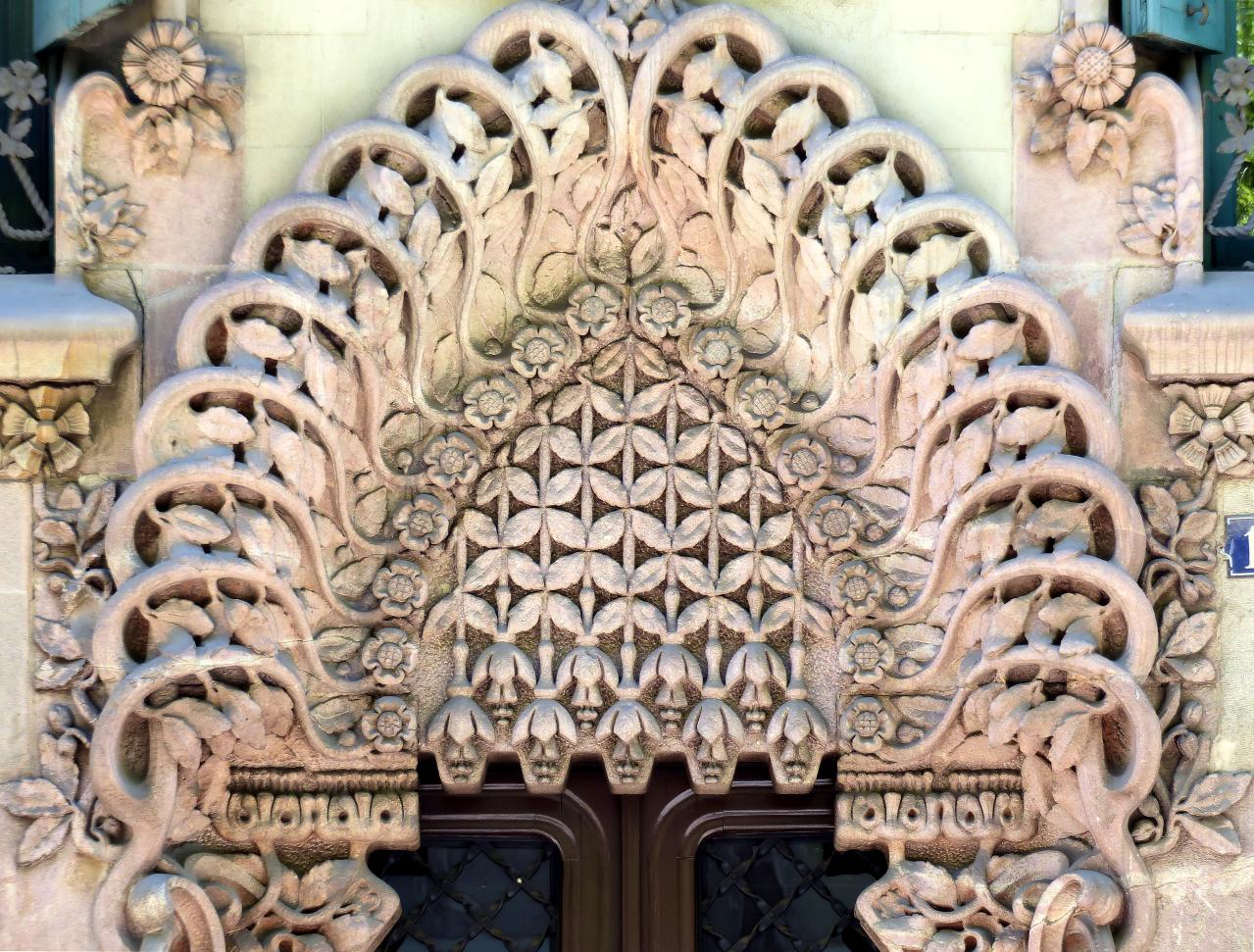#2373. Intricate Art Nouveau Façade Element: Symmetry of Natural Motifs in Stone
This fragment exemplifies an exquisite specimen of modernist architectural stucco work, likely belonging to the Art Nouveau style of the early 20th century. It represents a richly decorated decorative element of a façade, possibly positioned above an entrance group or a window opening of the building.
The composition is designed in the form of a fan-shaped structure with a symmetrical pattern. The central part contains a geometric ornament consisting of repeating rhomboid elements, surrounded by floral motifs. On the sides, curved rhythmic elements spread out, resembling stylized plant shoots or waves, creating a sense of movement and organic flow.
Particularly impressive is the craftsmanship of the stone carving with meticulously elaborated details: floral rosettes, leaves, and elegant curls. The stonework demonstrates a high level of mastery, characteristic of a period when handwork and decorative aesthetics were highly valued in architecture. The light shade of the stone accentuates the volumetric relief and the play of light and shadow in the recesses of the ornament.
This decorative element serves as an excellent example of how Art Nouveau architecture sought to synthesize functionality with artistic expressiveness, utilizing natural forms and rhythms in combination with geometric patterns to create a unique visual language.
